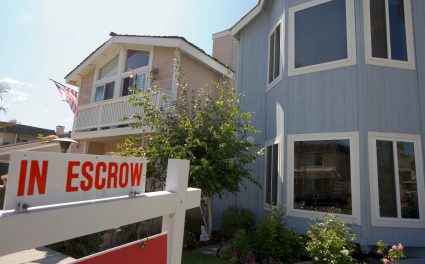Have you or your clients experienced appraiser discrimination?
- Never (90%, 129 Votes)
- Yes, rarely (5%, 7 Votes)
- Yes, often (3%, 5 Votes)
- Yes, sometimes (2%, 3 Votes)
Total Voters: 144
Diverse representation is needed
The real estate industry needs diverse representation to reflect its diverse group of clients — appraisers included.
Nationally, 59% of the general population are white, non-Hispanic compared to 82% of real estate agents and brokers. However, 92% of appraisers are white, and of those, the majority are male and older than 45, according to 2022 data from the U.S. Bureau of Labor Statistics.
Appraisers are prohibited from using classifications, such as race and religion, or their assumptions about different groups of homeowners to develop their opinion of the property value they are acquiring or own. [42 U.S.C. § 3604(a), (b), (f)(1)-(2)]
For example, consider a Black couple seeking to refinance their home. They believe their home’s value is $550,000. The lender orders an appraisal
The homeowners believe their home was appraised below fair market value (FMV). They submit another application for a mortgage to refinance the property. The homeowners remove all belongings indicating their identity and ask a white friend to pose as the homeowner for the appraiser. The lender orders an appraisal and the home appraises for a much higher $750,000.
Editor’s note — This is a current lawsuit in process and the accused appraiser has since countersued the couple for false accusations and defamation, according to Working RE.
While this is simply one anecdote, the broader trend points out the greater likelihood of low appraisals for Black-owned homes. In fact, homes under contract in predominately Black neighborhoods are 1.7 times more likely to come in under the final sales price than homes appraised in neighborhoods where most residents are white, according to a study by Freddie Mac.
The fact that the appraisal industry is dominated by a single demographic of individuals makes the opportunity for bias much more likely.
For homeowners of color to build generational wealth by investing in real estate assets such as their homes, accurate appraisals are dire for them and their communities. Thus, tools to enhance automated valuation models (AVM) which eliminates an appraiser’s possible bias due to a neighborhood’s racial and ethnic makeup, are necessary to ensure equal valuation results in the appraisal of properties, according to the Urban Institute.
The lack of racial representation reflective of the general population within the appraisal industry means people of color are less likely to:
- know about the profession as a vocational opportunity;
- mentor with a person of color for practical training in the industry; and
- enhance their generational wealth through real estate, according to the New York Times.
Eliminating appraisal bias among all people of the same income level sets the conditions for acquiring real estate, which typically starts with homeownership, obtaining mortgage financing and eventually building wealth for everyone.
Related Video: Access to Homeownership and the Wealth Gap
Click here for more information on the wealth gap.
Legislation steps up to mandate change for diversity
Today’s long-standing diversity gap among appraisers will take years to close. Many people of color don’t even know about appraisals, much less that they can become an appraiser as a livelihood. So, what can be done now to rule out bias in the appraisal industry?
As of October 2022, just 750 California appraisers were at the trainee level and 35% of applicants were passing their certified general exam, according to the California Bureau of Real Estate Appraisers.
The appraiser community in California is small at a little over 9,300 active appraisers licensed by the California Bureau of Real Estate Appraisers (CalBREA). However, the profession has an outsized impact on the generation of real estate wealth in California. Appraisals often make or break potential wealth for an individual, or for an entire community. An unchecked appraisal bias can do serious harm to a community’s future.
First and foremost, incoming appraisers need to be informed about the long government and professional history founding the racial wealth gap — such as the homeownership gap and mortgage redlining maps. Without recognizing real estate history and its effect on people of color, appraisers are ill-equipped when preparing an appraisal.
Related Video: Civil Rights and Fair Housing Laws
Click here for more information on fair housing history.
The CalBREA recently included a check box on the complainant’s complaint form noting whether they believe the appraisal received was below market value. The CalBREA collects demographic information along with the responses and will report their findings to the state legislature by July 1, 2024. [Calif. Business & Professions Code §11310.3(b); (e)]
Further, appraisers receive one hour of instruction in cultural competency every four years as part of their continuing education. [Bus & Prof C §11340(e)]
As for real estate licensees, they now complete a two-hour implicit bias training course as part of their license renewal continuing education covering:
- the impact of implicit, explicit and systemic biases on consumers;
- the historical and social impacts of bias; and
- steps to recognize and address one’s own bias. [Bus & Prof C 10170.5(a)]
A two-hour implicit bias training session won’t eliminate bias in the real estate industry, but it does push the industry-harming issue of bias against others to the forefront of incoming and practicing licensees.
With legislative encouragement, appraisers will be equipped with — at the very least — a staging for how bias skews real estate transaction levels.
Related article:
Freddie Mac study bares ugly truth of racial appraisal gap
Changing the appraisal culture from within
At the end of the day, training alone is not enough — the real work lies with the supervision of appraisers.
To address harmful pockets in appraiser culture, supervising appraisers need training to uncover implicit bias conduct in appraising.
The supervising appraisers have a responsibility to their trainees — and in turn buyers and owners of real estate — to supervise their trainees as competent to perform unsupervised inspections. [Calif. Code of Regulations §3568(e)(1)]
Competency presumes the appraiser can adequately perform their job without valuation distortions flowing from racially motivated partisanship — whether implicit or explicit.
Thus, supervising appraisers need to watch for and correct their trainees’ proclivity to act on biases, to stop harmful inclinations so they are not reflected in opinions of property value.
To stay informed about appraisers and their impact on homeowners, subscribe to firsttuesday’s Quilix!
Related article:
New California law tackles bias in real estate appraisals














